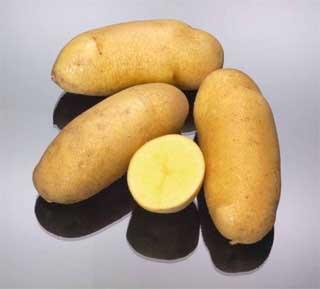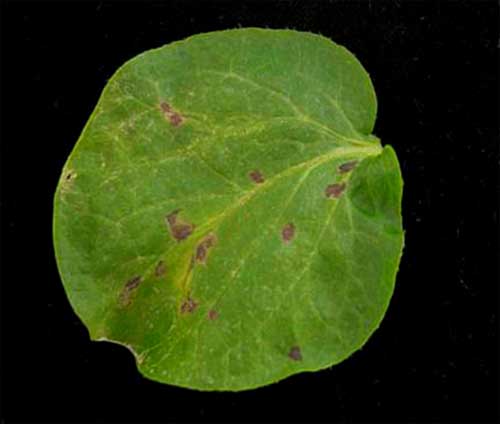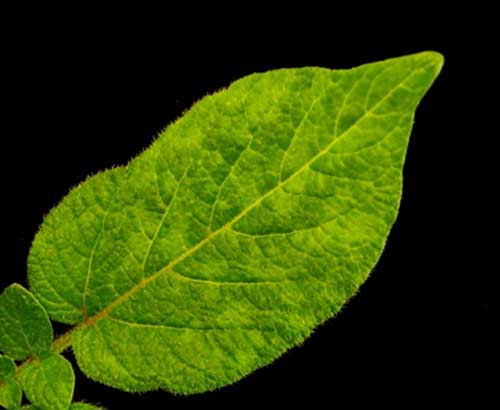Extreme Resistance To Potyviruses In Solanum Tuberosum Group Phureja
Published on 19 March 2010 in Sustainability and Communities

Introduction
Aphid-transmitted virus diseases are a major cause of potato seed tuber degeneration. In temperate regions with well-developed potato production systems, virus incidence is controlled through planting healthy stocks produced by seed potato classification schemes and the aphid vectors are controlled by insecticides.
Key Points
In Scotland, seed potato producers enjoy a natural advantage due to the northerly location because aphids generally migrate into crops later in the growing season several weeks after crop emergence when plants have developed some resistance to virus systemic movement (known as mature plant resistance).
Therefore, until now there has been less emphasis on obtaining host resistance to aphid-borne viruses. However, the predicted warming of the climate with wetter winters and drier summers is likely to increase the threat from virus diseases because warmer weather will favour increased overwinter survival and earlier build up of populations of virus-vector aphids. Indeed we have already witnessed earlier incidence of aphids in potato crops in Scotland.
Research Undertaken
Persistent viruses such as potato leafroll virus can be effectively controlled by insecticides but potyviruses that are transmitted by aphids in a non-persistent (non-circulative) manner are more difficult to control because they can be acquired and transmitted by the aphid in seconds.
In recent years the incidence of potyviruses such as potato virus Y (PVY) and potato virus A have increased in Europe. In addition, new and damaging strains of PVY such as PVYNTN which causes severe necrotic symptoms in tubers have been found increasingly in crops. For these reasons, deployment of sources of resistance to potyviruses in commercial potato cultivars is now highly desirable.
Plant defence responses are of two predominant types known as the hypersensitive response (HR) and extreme resistance (ER). HR is a rapid response that is elicited on recognition of virus effector molecules and initiates death of the infected cell resulting in small necrotic lesions at the site of infection which usually stops the infection from spreading systemically in the plant. HR is usually conferred by plant genes designated as N genes.
ER is the product of elicitation of a host resistance (R) gene and completely prevents virus multiplication and spread; necrotic lesions are not usually visible. Both kinds of resistance have been identified in wild and cultivated potatoes and some have been usefully deployed in commercial potato cultivars.
Figure 1: Symptoms in leaves of phureja-stenotomum clones manually inoculated with potato virus Y.

A. Necrotic local lesions in inoculated leaves of clone 2DH.36.

B. Diffuse mild mottle in upper non-inoculated leaves of clone 824.P.75.
At SCRI during the 1970s plants from the edible diploid groups Phureja and Stenotomum were crossed by natural pollination in the field and selected for adaptation to tuber in the long days of the UK, as well as for improved tuber characteristics and disease resistance including virus diseases.
Plants of S. tuberosum group phureja can be hybridised with S. tuberosum and have been used at SCRI for genetic improvement of tetraploid S. tuberosum breeding lines and commercial cultivars of diploid phureja potatoes (for example, Mayan Gold and Inca Dawn) are available. We have screened this collection of ‘phureja’ clones for resistance to aphid-transmitted potyviruses.
Clones of S. tuberosum group phureja were identified that they were completely resistant to PVY, PVA and PVV by manual inoculation. Resistant and susceptible clones were crossed and the progeny screened for resistance to PVY.
Policy Implications
The results of these tests suggest that resistance may be conferred by a dominant major gene. We are currently working with colleagues in the Genetics programme at SCRI to develop molecular markers associated with the resistance that can be used in future breeding programmes.
Author
Dr Lesley Torrance, Head of the Plant Pathology programme, SCRI Lesley.Torrance@scri.ac.uk
Topics
Sustainability and Communities







